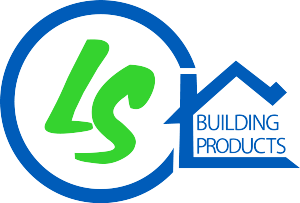Interior doors are more than just functional components of a home—they contribute significantly to a room's privacy, noise control, and overall aesthetic. With options ranging from traditional wood panels to contemporary glass and composite varieties, understanding the details is crucial when selecting the best fit for your needs. LS Building Products offers a wide range of interior doors designed to suit any style or purpose, ensuring you find the perfect match for your home or renovation project.
Table of Contents:
- Anatomy of an Interior Door
- Popular Types of Interior Doors
- Material Choices
- Core Construction Options
- Matching Styles to Your Home
Anatomy of an Interior Door: Understanding the Basics
To make an informed choice, it helps to know what goes into an interior door:
- Slab: The main body of the door.
- Stiles and Rails: Vertical and horizontal components that create the door’s frame.
- Panels: Inserts within the frame that add depth and design; can be solid or include glass.
- Bore: The pre-drilled hole for a handle or lock.
- Frame: The structure that secures the door to the wall.
These parts come together to influence a door's appearance, stability, and functionality.
Popular Types of Interior Doors
Different interior door types cater to various needs and design preferences:
1. Swing Doors
The most common type, swing doors are attached to a frame by hinges and can open inward or outward. Their versatility makes them suitable for bedrooms, bathrooms, and common areas. Swing doors can also be paired to create elegant French doors, adding a touch of sophistication and openness.
2. Pocket Doors
Pocket doors slide into a hidden compartment within the wall, making them a space-saving solution ideal for smaller rooms like half-baths or pantries. They offer a clean, modern look and can be a great choice where door clearance is an issue.
3. Barn Doors
Popular in contemporary and farmhouse designs, barn doors are both functional and stylish. They slide along a rail mounted above the doorway, making them perfect for areas where space constraints or a rustic aesthetic are considerations.
4. Bifold Doors
Ideal for closets, laundry rooms, or storage areas, bifold doors consist of panels that fold against one another when opened. They maximize access to wider doorways and come in designs that complement different home aesthetics.
Material Choices for Interior Doors
Selecting the right material is key to balancing appearance, durability, and cost. LS Building Products offers a variety of material options, each with distinct advantages:
1. Solid Wood
Known for its timeless look and high durability, solid wood doors add a warm, natural element to any room. They’re also excellent at insulating sound, making them ideal for bedrooms or home offices. Popular types include oak, mahogany, and maple.
Benefits:
- Superior sound insulation
- Durable and long-lasting
- A classic, high-end appearance
2. Wood Composite (Engineered Wood)
Wood composite doors offer a solid feel at a lower cost than pure wood. Made from engineered wood products, these doors are strong and resist warping better than traditional wood.
Options include:
- Routed Wood Composite: Features carved designs and is often chosen for elegant, substantial-looking doors.
- Molded Composite: Skins of pressed wood fiber create various designs, and they come in both hollow and solid core options.
3. Glass Panel Doors
Glass panel doors strike a balance between privacy and light flow. These doors are perfect for areas like home offices or primary bathrooms. You can choose between a wide variety of options ranging from clear glass for visibility to frosted glass for added privacy.
Benefits:
- Enhances natural light flow
- Creates an open, airy feel
- Customizable with various glass types and designs
Core Construction Options: Understanding What’s Inside
The core of a door greatly impacts its weight, insulation, and cost:
1. Hollow Core
Lightweight and budget-friendly, hollow core doors are typically constructed with a wooden frame and a honeycomb interior. These are most commonly used for less trafficked areas due to their lower durability and soundproofing.
Benefits:
- Affordable and easy to install
- Lightweight
2. Solid Core
Solid core doors are crafted from engineered wood and have a denser composition than their hollow counterparts. They offer excellent sound insulation and feel sturdier.
Benefits:
- Better soundproofing than hollow core
- Sturdy feel and better resistance to wear.
3. Mineral Core
Typically reserved for commercial use or areas needing a fire-rated door, mineral cores offer fire resistance of up to 60 or 90 minutes.
Benefits:
- Meets fire safety codes
- Ideal for added protection in specific residential areas
Matching Interior Door Styles to Your Home
Selecting a door that complements your home’s style is just as important as its functionality. Whether your aesthetic is modern, traditional, or somewhere in between, LS Building Products offers doors that align perfectly with your vision.
Farmhouse and Rustic: Opt for paneled wood or barn-style doors that echo a warm, inviting feel.
Contemporary and Minimalist: Choose flush doors or sleek glass panel doors for a clean, modern look.
Traditional: Stile and rail wood doors or those with intricate panel designs are a great match for more classic home interiors.
Why Choose LS Building Products?
At LS Building Products, we combine extensive industry knowledge with a vast inventory to ensure contractors, remodelers, and homeowners receive the best options for their projects. We proudly supply top-quality interior doors from renowned manufacturers, including Jeld-Wen.
Visit our product page to browse more offerings or learn more about our services on our main site. For those looking to enhance their homes, LS Building Products provides not only top-tier materials but also expert consultation and support.
.png?width=98&height=67&name=Logo%20(13).png)
.jpg) Anatomy of an Interior Door: Understanding the Basics" loading="lazy">
Anatomy of an Interior Door: Understanding the Basics" loading="lazy">
.jpg)
.jpg)
.png)


